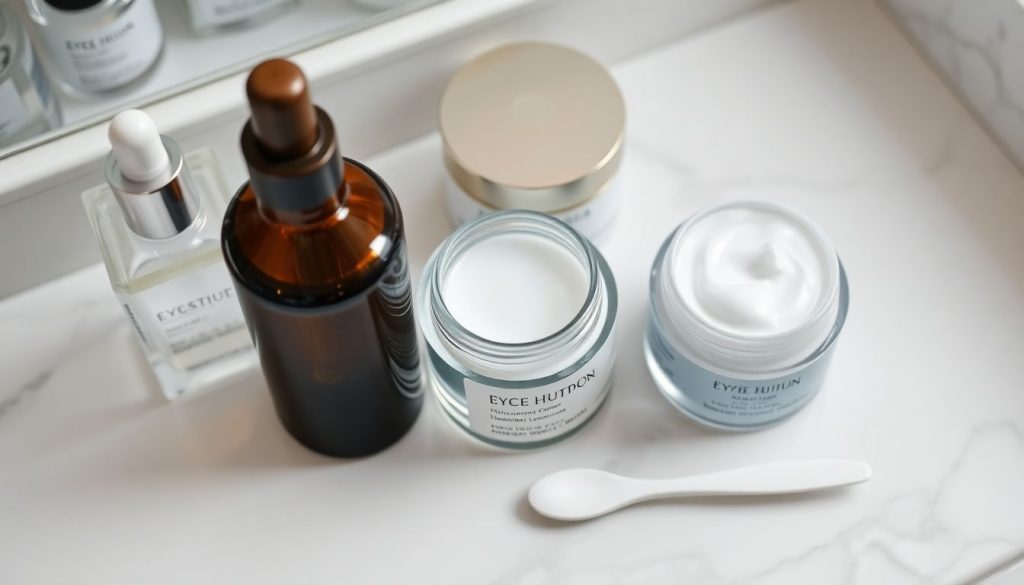Understanding Your Skin and the Products
You need to know your skin. That helps you pick the right fit for your skin. Using the wrong thing could worsen the condition.
Identifying Skin Type
It may be sensitive or “normal.” Oily skin would typically shine. Dry skin feels tight or flaky. Sensitive skin gets red or itchy easily. Normal skin is balanced. Finding yours is the first step toward caring for it properly.
How to Read Ingredients on the Label
A skincare label can seem like a different language altogether. Start by finding the ‘active’ ingredients. Retinol works against wrinkles. Vitamin C brightens the skin. Hyaluronic acid hydrates. These give actual results. Discover what each ingredient does, and this will help you form your routine better.
Test It
Always test new products on an acceptable portion of skin before applying them all over your face. Some apply a thin layer on their inner arms and wait 24-48 hours: if a rash doesn’t appear, it is safe to proceed. This little trick could save you a lot of trouble if anything were to react badly.
Golden Rules of Layering Skincare Products
Layering is not merely the piling on of products; it refers to the appropriate sequence of application so that all products act in synergy.
Rule #1: Lightest to Heaviest
Begin with the lightest; finish with the heaviest atop. Picture it: Any kind of water-based serum goes first; thick creams get last havens. Therefore, a thinner product will not penetrate a thicker counterpart. Thus, the scheme allows for maximum absorption.
Rule #2: Water-Based Over Oil-Based
Water-based products come before oil-based products, always. If it’s oil, then it can seal off the chances of water getting through. So make sure you put on your hydrating serums first and seal them off with oils later.
Rule #3: Acid-Base
The acid-base balance of your product affects the action of that product. Use low-pH products like Vitamin C first, followed by AHAs or BHAs. They need a clean slate to absorb effectively, so either wait 30 minutes after the application or proceed to the next step.
The Ideal Skincare Layering Routine: Step-by-Step
Just a general overview for any general person to follow in the morning and evening, protecting and repairing the skin.
Morning Routine
The mornings are all about protecting because of sun and pollution; antioxidants and SPF should be stuffed.
- Step 1: Cleanser – First things first: a gentle cleanser that will wipe all oil and dirt away.
- Step 2: Toner – Toners balance your skin pH and prep it for the upcoming steps.
- Step 3: Antioxidant Serum (E.g. Vitamin C) – Vitamin C protects from damage after toners are applied.
- Step 4: Moisturizer – Moisturizers hydrate the skin, creating a smooth base.
- Step 5: Sunscreen (SPF 30 or above) – Sunscreen is indispensable. It will prevent the skin from aging or getting damaged. Use it every day.
Evening Routine
At night, it is when repair happens. It is basically water and cell renewal.
- Step 1: Double Cleanse (Oil-based and followed by Gentle Cleanser) – Start with the oil-based cleanser then follow with a mild cleanser in order to remove make-up and dirt. This guarantees your skin is clean.
- Step 2: Toner – Again, balance your pH level on your skin.
- Step 3: Exfoliant (once or twice a week) – Exfoliants function to slough off dead cells from the skin. Use them in moderation, since too much exposure to them causes skin irritation and flaking.
- Step 4: Serum (for example, retinol, hyaluronic acid) – Retinol formes another line of defense against fine lines and wrinkles, while Hyaluronic acid provides moisture. Pick either one that best fits your requirements.
- Step 5: Moisturizer/Night Cream – Night cream tends to be heavier than their daytime counterparts, thus providing extra moisture.
- Step 6: Facial Oil (Optional) – Facial oils close in moisture. This is an excellent step to take especially for dry skin types.
Common Mistakes in Skincare Layering (and How to Avoid Them)
Even experts can err at times. Here is how to avoid typical pitfalls.
Over-Exfoliating
Too much exfoliation can ruin your skin. Signs that you are damaging your skin include redness, irritation, and breakouts. Limit exfoliation to 1-2 times per week.
Mixing Incompatible Actives
Some ingredients do not mix well together. Never apply retinol and vitamin C at the same time. This will trigger irritation. Vitamin C should be used in the morning; retinol saves the night.
Skipping Sunscreen
Sunscreen needs to be worn every single day, in sunshine and rain, to keep the skin nice and healthy. Never forget this step.
Troubleshooting and Expert Tips
Are you having some problems? This will fix them.
Pilling
Pidding, as it is called, occurs when skin products become lumpy when placed upon the surface of the skin. Use too much and pilling occurs, or the formulas of two products begin to fight each other: one product becomes a matrix for the other. So less is better: get your skin ready-done and dry.
Conclusion
Skincare layering done correctly will make your skin come alive. It will give you that ever-so-lovely glow. Just remember the basic principles: thinnest to thickest, water-based first, then oil-based, and pay attention to pH levels. Now find what works best for you through trial and error. It truly doesn’t take much for beautiful skin!

